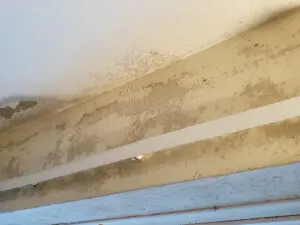New Damp and Mould Guidance
The government has released new guidance for social and private rented landlords, to help address the health risks associated with damp and mould in the home.
The new guidance, ‘Understanding and addressing the health risks of damp and mould in the home’, was published on the 7th of September 2023, and states the legal responsibilities of landlords to their tenants with regards to damp and mould management.
It is made clear within this guidance that effective action should be taken to remove pervasive damp and mould, and that it should not be written off as a result of the tenant’s ‘lifestyle choice’. The landlord’s responsibility involves identifying the underlying cause of damp and mould and find long term solutions, for example providing adequate ventilation.
This publication comes as a response to the Coroner’s report on the tragic death of Awaab Ishak, which described failures in responsibilities of a housing provider to take the right steps in tackling damp and mould to prevent associated risks. Awaab’s case informed the new law, ‘Awaab’s Law’, for landlords, including their responsibilities and penalties for not complying with the government’s damp and mould guidance.
The investigation into Awaab’s case found that there was no up-to-date information relating to the health risks surrounding damp and mould accessible to the housing sector. The new guidance, therefore, emphasises the serious risks associated with exposure to mould, and the potential ramifications if steps aren’t taken to minimise exposure within the home.
Legal Damp and Mould Standards for Housing Providers
There are now 5 legal standards housing providers must abide by, in line with the new guidance. These 5 legal standards are:
- All homes must be free from hazards at the most dangerous ‘category 1’ level.
A ‘category 1’ hazard is generally one that will require the tenant to require medical attention over the course of a year. All potential hazards can be evaluated using the ‘Housing Health and Safety Rating System (HHSRS)’ tool. - All homes must not contain conditions that are prejudicial to health.
This gives tenants the power to take legal action if damp and mould becomes harmful to their health, or a nuisance. - Homes must be fit to live in.
Properties must be free of hazards, including damp and mould, that mean the property is unsuitable for occupation in that condition. There is no legal requirement for landlords to resolve the issue within a time period, but tenants can complain to the Ombudsman if repairs are not planned promptly. - Social housing specifically must meet the Decent Homes Standard (DHS)
To meet this standard, social housing must be free from ‘category 1’ hazards, as previously mentioned. It also states that the property must be in a reasonable state of repair and provide reasonable thermal comfort, inadequacies in either of these areas may lead to mould. - Privately rented homes must meet minimum energy efficiency standards.
These regulations don’t directly mention damp and mould, however, an energy efficient property is less likely to be impacted by damp and mould as a result of condensation. The government is committed to evaluating energy efficiency within social housing.
Landlords must take action on reports of damp and mould, establishing the problem and carrying out repairs if it is a result of a property fault.
Ongoing Government Commitments
Wider work is still ongoing within the rental sectors, including commitments to:
- re-evaluate the Decent Homes Standard to be applicable to private rented homes;
- set new standards that require senior housing staff to bear, or work towards, recognised housing management qualifications; and
- change the law to allow social housing residents to raise damp and mould complaints directly to the Housing Ombudsman;
- launch the new Private Rented Property Portal to give all private tenants direct access to an Ombudsman if their landlord fails to resolve valid complaints.
To read the latest guidance for housing associations on understanding and addressing the health risks of damp and mould in the home, visit the Gov.uk website here.
For information on safe mould remediation, including finding the right PPE to protect your staff, please get in touch with our team, or read more about safe mould remediation here.
Published September 2023
